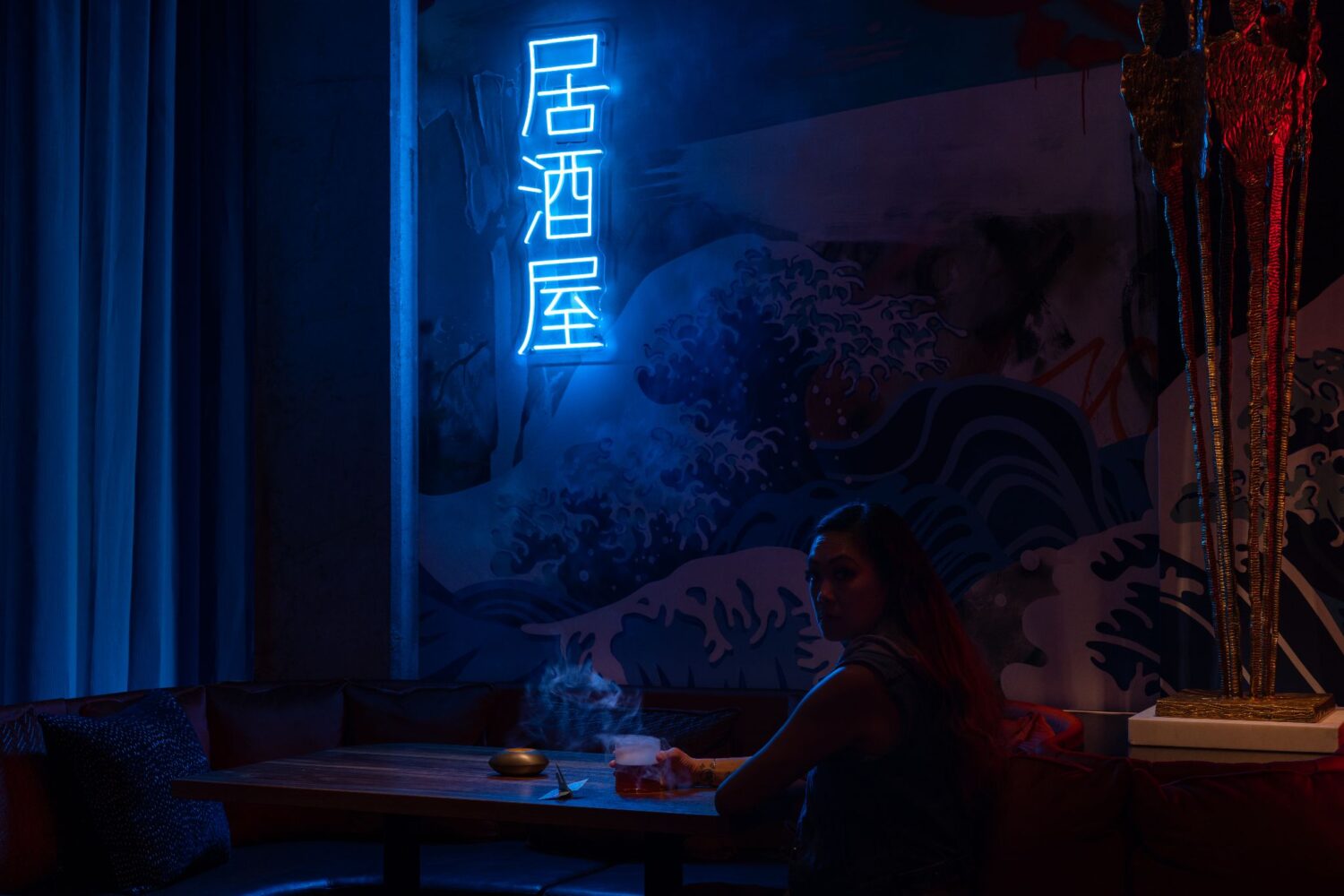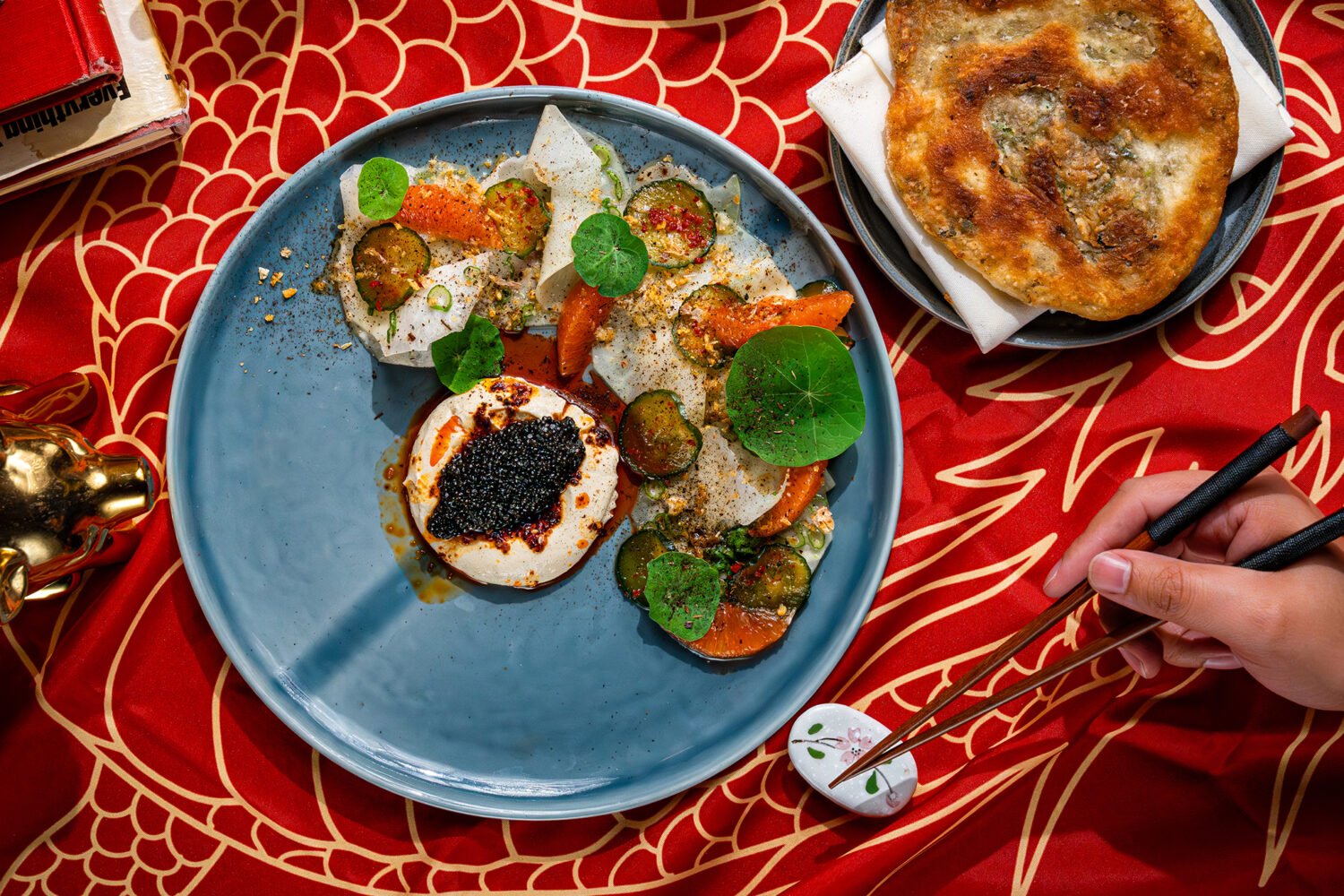July 2006
It would be tempting to write off the new Woo Lae Oak in Tysons Corner as another ethnic eatery gone mod. It has the small plates, the pop soundtrack, the funky abstract art, and a mood wall that changes color–a lava lamp for the new millennium.
But that wouldn't get it quite right.
For one thing, this is a place with a pedigree: The Pentagon City original has wined and dined Korean power brokers and politicos for years.
For another, the kimchee will still bring tears to your eyes. And though delicacies many Westerners have long found hard to embrace, like seaweed stew, haven't made the trip to Tysons, the many-splendored chili-laden codfish casserole (featuring fish heads) has.
But what make the spinoff worth notice are Korean-accented dishes and sushi not to be found at Pentagon City.
A meal at the new Woo Lae Oak–call it Woo Two–can play out various ways. There's a bar and sushi menu and a long list of starters, classic Korean casseroles and barbecue, a high-energy lounge, and a low-key, art-filled dining room.
It's hard to resist beginning with delicate Tiparillo-shaped crepes wrapped around a combo of shredded beef, shrimp, and vegetables. More substantial are Korean-style scallion-and-seafood pancakes punched up with chili-and-scallion-flecked soy sauce. Save some of the sauce for the crisp pan-fried tidbits known as jeon–the egg-batter coating turns shrimp, flounder, and ground-beef-stuffed chili peppers into bite-size omelets.
There are also familiar pan-Asian staples like dumplings filled with pork, tofu, and cabbage, by turns springy and crunchy–as well as fusiony plates. Most notable are wings with a sweet-spicy Asian glaze and bleu cheese for dunking, crunchy calamari with smoky aïoli, and Korean barbecue sandwiches. Both the bul goki and spicy pork on cornmeal-dusted rolls are fabulous.
The kitchen's success with forays into sushi and tempura are mixed. Both lack the delicacy you'd expect of a fine Japanese restaurant. But some sushi-roll combos–the Bamboo, sweet jumbo crab topped with spicy tuna, comes to mind–wow nevertheless.
Probably the biggest surprise is that, at its heart, the splashy new Woo is not so different from the old Woo. Jap chae is a soy-sauce-glossed heap of slippery noodles flecked with beef and vegetables. Bibim bap, the composed casserole of rice, filaments of seaweed, a runny fried egg, and a choice of meats, is as much fun to toss with chili paste as it is to eat. And short ribs simmered with chestnuts, dates, and soy sauce have depth of flavor and a smidgen of sweetness. These Pentagon City staples remain as fine as ever.
The same goes for the meats grilled at the table, be they bul goki, spicy marinated pork, short ribs, or tongue. Given the myriad choices at the Tysons location, you might be thinking about skipping the barbecue. Bad idea. Consider all the fabulous condiments you'd miss: tiny, chewy fried fish meant to be eaten whole; garlicky, chili-shot cucumber and cabbage (a variation on standard kimchee); salty pickled sprouts and greens to eat by the forkful or tuck into lettuce wraps with the meat for a Korean-style sandwich.
Dessert might make you forget you've been dabbling in Asian fusion. Once you get beyond green-tea ice cream to the tasting of flavored crèmes brûlée and cocoa-dusted pyramid of chocolate mousse cake, you might as well be eating in any Modern American restaurant. They're fine but nothing special. Better would be sweets that are more Korean.
Because even with the pricey cocktails–a glass of the new Johnny Walker Blue will set you back nearly $30–and the Thursday-night jazz combo, Woo Lae Oak's heart and soul is still in Korea–and that's a good thing.













